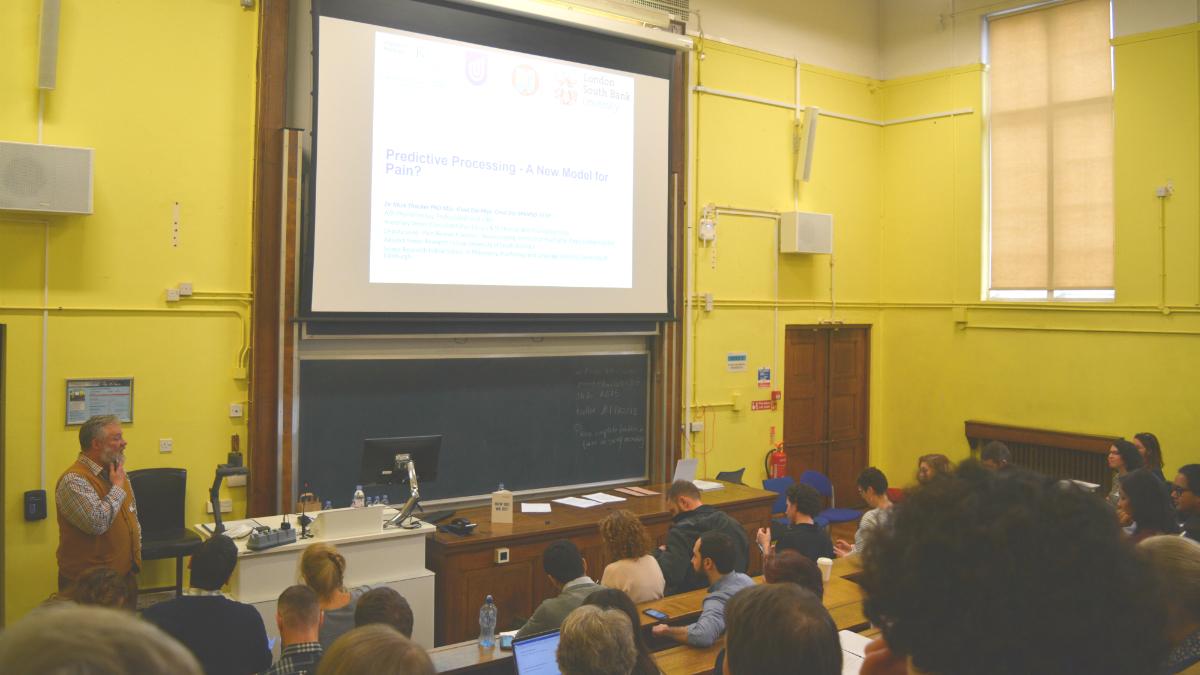Physiotherapists need a new model of pain that takes account of a ‘predictive’ sensory and cognitive interaction, and the influence of people’s emotions and expectations.

CSP fellow Mick Thacker outlined a predictive processing model of pain
This was the message from CSP fellow Mick Thacker, associate professor at London South Bank University at the Physiotherapy Pain Association (PPA) event on 26 January.
He said: ‘A good model of pain should be able to answer sensory, emotional, cognitive and social components.
‘It has to be able to incorporate peripheral sensitisation and how anxiety, emotion, expectation and attention may change and impact pain.
‘But many of the established models fall short on one or more of these categories.’
Referring to Patrick D. Wall, author of the Textbook of Pain, Professor Thacker said: ‘Pat was 30 or 50 years ahead of his time and in his book he said we need a better model of pain, because we’ve become complacent.
‘We have things like the neural matrix, Louis Gifford’s Mature Organism Model (MOM) and Lorimer Moseley’s reconceptualising pain – and I’ve been lucky enough to work with those people and be part of those evolutions.
‘But none of those models answer the fundamental question, which is: if pain is a percept, then how does the neuro-physiology involved go on to be become a higher centre cognitive function?’
A model of predicative processing
Delegates heard that one possible answer was to consider that there is a dynamic ‘bi-directional’ interaction between the higher centres of the brain and the periphery of the body.
Professor Thacker explained that this was the subject of his soon-to-be-published research, in collaboration with Andy Clark, professor of philosophy and chair of logic and metaphysics at the University of Edinburgh.
‘What I am proposing is a predictive processing model of pain. A model that aims to integrate the lower centres – the periphery and the spinal cord together with the mid brain and brain stem –with the higher centres.
‘In it, each level of the system is predicting what is happening at the level below, receiving information from it and using that information to update its predictions.’
Expectations ‘meet’ sensory inputs
Professor Thacker explained that his model relied on the idea of predictions or ‘priors’ that people acquire over time. These predictions are based on frequently occurring events that form the basis of people’s underlying expectations.
‘We don’t just transmit sensory information from the periphery up to the brain, we compare sensory information to our models of expectation,’ he said.
‘Salient events change your nervous system and lead to predictions. These predictions then cascade down through the nervous system and meet afferent [inward conducting] sensory inputs.
‘When sensory inputs don’t match down-flowing predictionsan error signal is passed on through the system.
‘And anxiety, emotion and attention can impact the model, change the flow of information descending through the system and turn the weighting of sensory errors up and down.’
Professor Thacker emphasised that the model was underpinned by the science of neuroplasticity, which provides a mechanism for alterations in sensitivity.
Referring to the model’s clinical implications he asked delegates: ‘When we treat people with pain are we trying to treat the sensory input or the prediction? Perhaps we need to think about both.’
Author: Robert Millett
Find Out More
Number of subscribers: 0



































